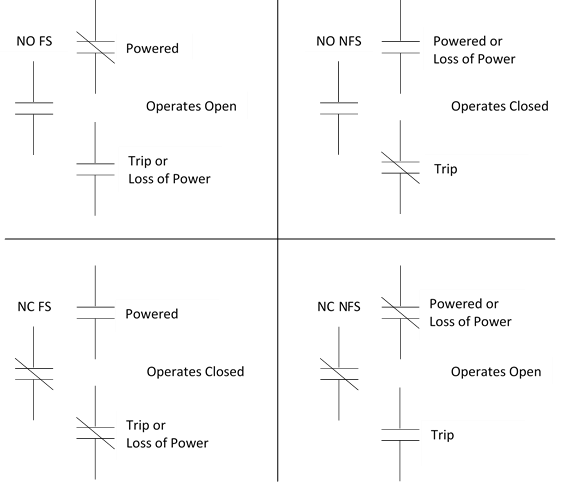Tech Talks
Relay Programing for Normally Open and Normally Closed Contacts in Failsafe or Non-Failsafe
When programming a protection relay, it can often be confusing to determine the correct settings for output contacts. The two areas of focus are determining if a normally open (NO) or normally closed (NC) output contact will be used and then if that output contact should be set to failsafe (FS) or non-failsafe (NFS). There is no right or wrong way to do it since it depends on the application, wiring, and programming.
Shown below are the four different combinations and how they operate in each scenario. On an elementary or interconnect diagram, a contact is shown in its deenergized state. If the contact is set to failsafe, when power is applied to a circuit, that contact will change states (a normally open contact will become closed and a normally closed contact becomes open) under normal operating conditions. When a failsafe output contact operates, the contact will operate back to its deenergized state. If the contact is set to non-failsafe, when a circuit is energized, that contact will not change states under normal operating conditions. When a non-failsafe output contact operates, the contact will operate opposite of its deenergized state.
The table below shows how each scenario functions during the deenergized state, energized or powered state, and the contact operating state. One application is having a trip output contact which is shown in the four examples below. The relay output contact can be programmed for any application such as trip, start, open, close, alarm, etc. It is important to set contacts to failsafe or non-failsafe correctly to ensure proper operation of the output contacts.
